Coffey Architects redesigns an apartment in a former school house in London
Timber tricks and decluttering techniques characterise this clever Clerkenwell conversion
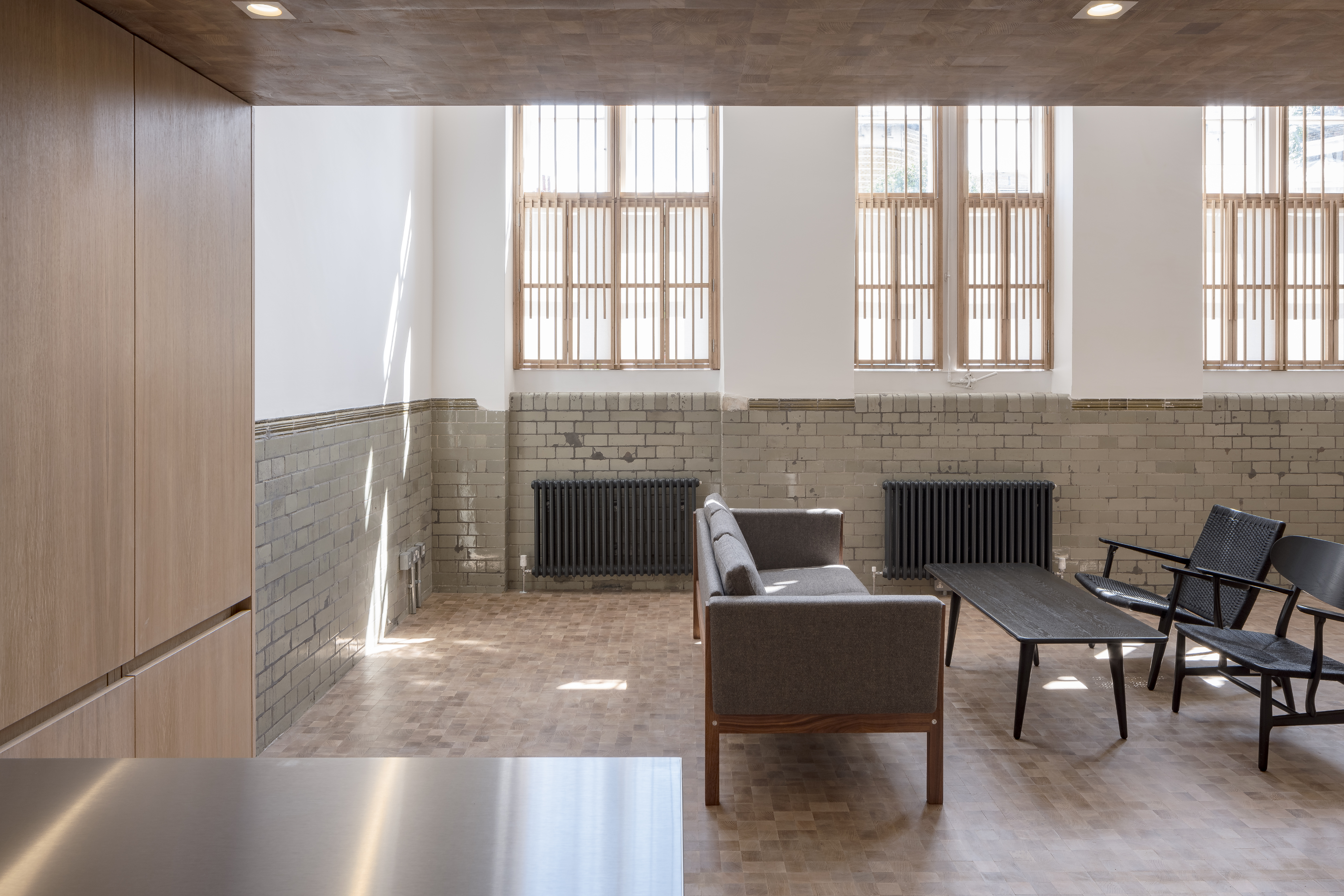
Coffey Architects has redesigned an apartment housed within a 19th century former school house in Clerkenwell. The approach was to insert a piece of ‘inhabited joinery’ into the apartment in one of the old classrooms with ceiling heights reaching over four metres and plenty of original character. The sculptural intervention is contemporary, yet its simplicity draws the eye to the newly revealed architectural detailing of the historical building.
Located on a pleasant campus of trees and gardens in the midst of Clerkenwell Conservation Area, the Grade II-listed school-house was built in 1892 by TJ Bailey and converted to residential and commercial use in 2000. The conversion of the classroom into a two-storey home with a mezzanine level, had left a cramped and dark space, prone to collecting clutter.
Coffey stepped in to open up the space, introducing some much-needed light. The architects stripped back anything in the way of the original architecture, cut back the existing mezzanine level to create a double-height living space, and relocated the staircase to the side of the plan. New voids of space were revealed that were ripe with potential.
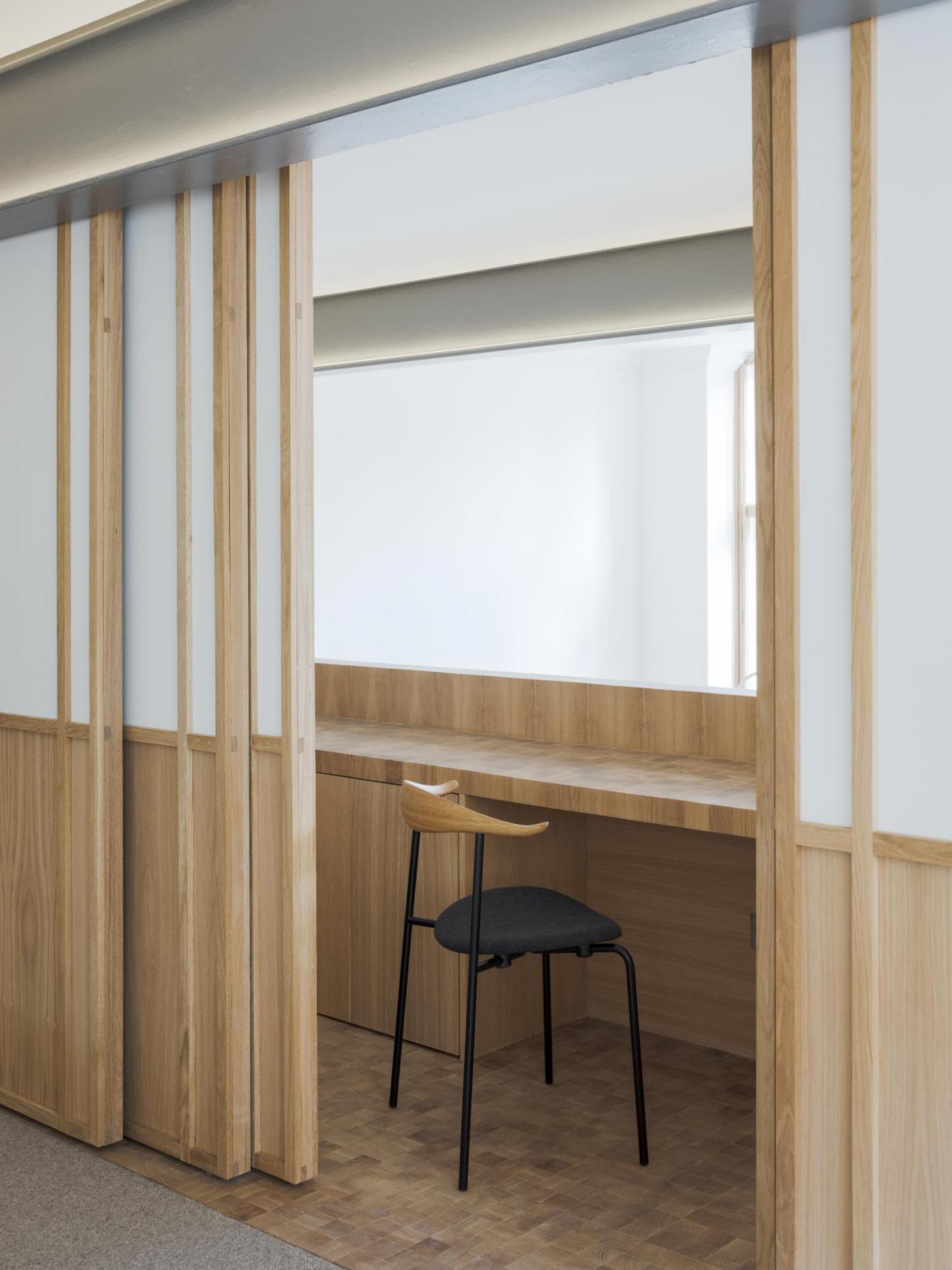
A process of replanning, redesigning and resculpting began. The small kitchen is tucked beneath the mezzanine. Lightly striped oak timber joinery lines the walls and hides neat storage spaces behind it. While sliding timber pocket doors conveniently reveal and conceal the snug downstairs and the bedroom upstairs.
Reached by the gracefully processing European oak staircase, the upper level is lit by the three metre high sash windows, framed by timber shutters lined with linen reminiscent of Japanese screens. At the top of the stairs a slim study area stretches out before the bedroom.
RELATED STORY
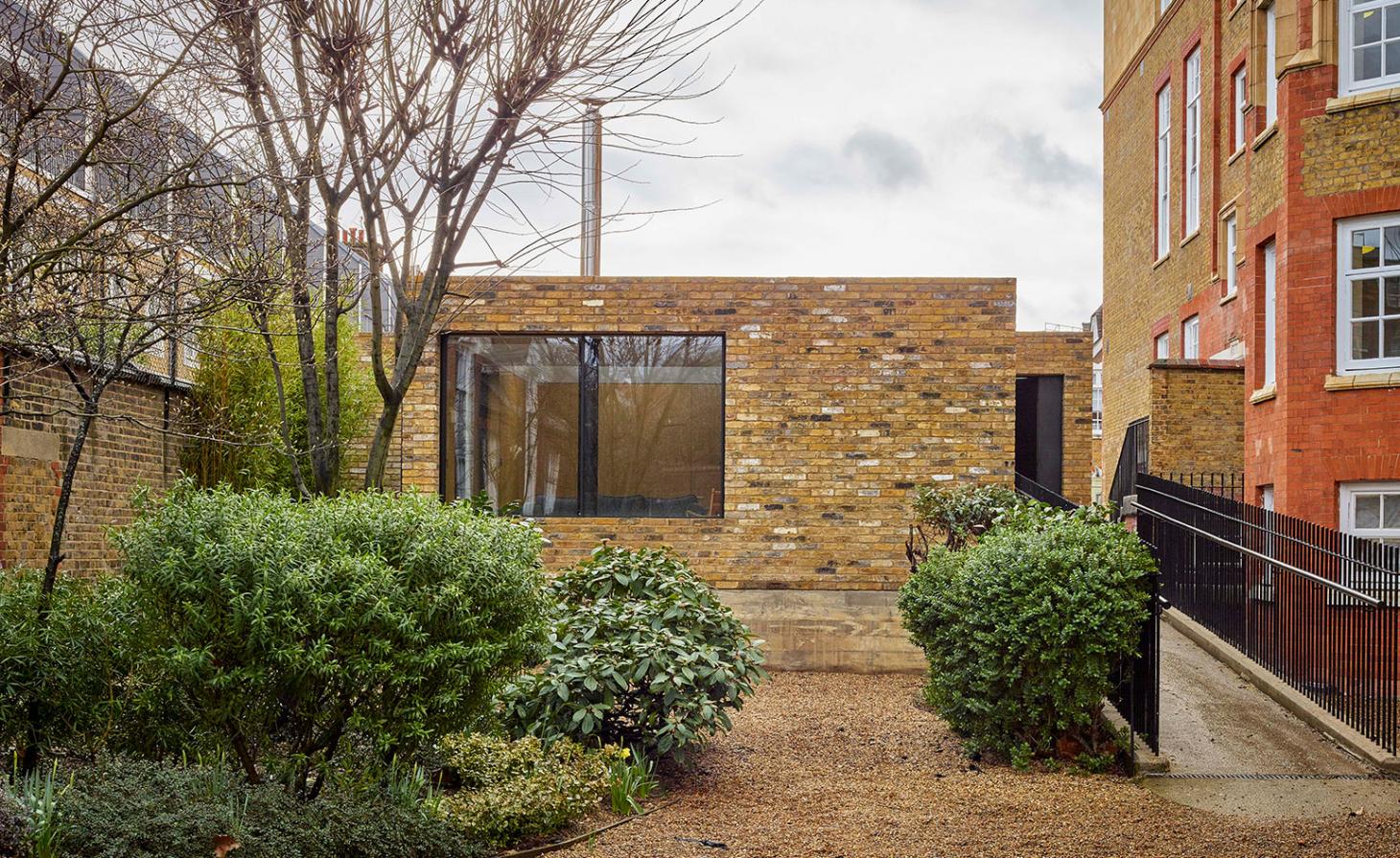
The highly efficient tight-knit plan, kitted out with sliding elements, is reminiscent of the clever formation of Hidden House, a RIBA-award winning house on the same campus, which involved similar timber tricks.
Coffey were keen to work again with contractor Ed Mcbeath of Woods London and joinery subcontractor James Wilkie, who they had worked with on Hidden House. Taking the opportunity to do something slightly different, they decided to line the floors, ceiling of the mezzanine level and craft a bespoke desk and dresser with 30,000 individually cut and laid cross-section blocks of European oak.
A new challenge for Woods London, the intensive technique was a labour of love, and the blocks were all hand-cut on site and carefully arranged at alternating angles in a random pattern. The end grain effect of the cubes creates a textured, yet smooth and hard-wearing finish reminiscent of the parquet flooring seen in archive photographs of the school.
Project architect Ella Wright wanted to show a clear definition between old and new, yet celebrate both at once. Original cornicing and green glazed bricks have been rediscovered and restored – and, an old penny dated 1900 found beneath the flooring was another wonderful discovery along the way.
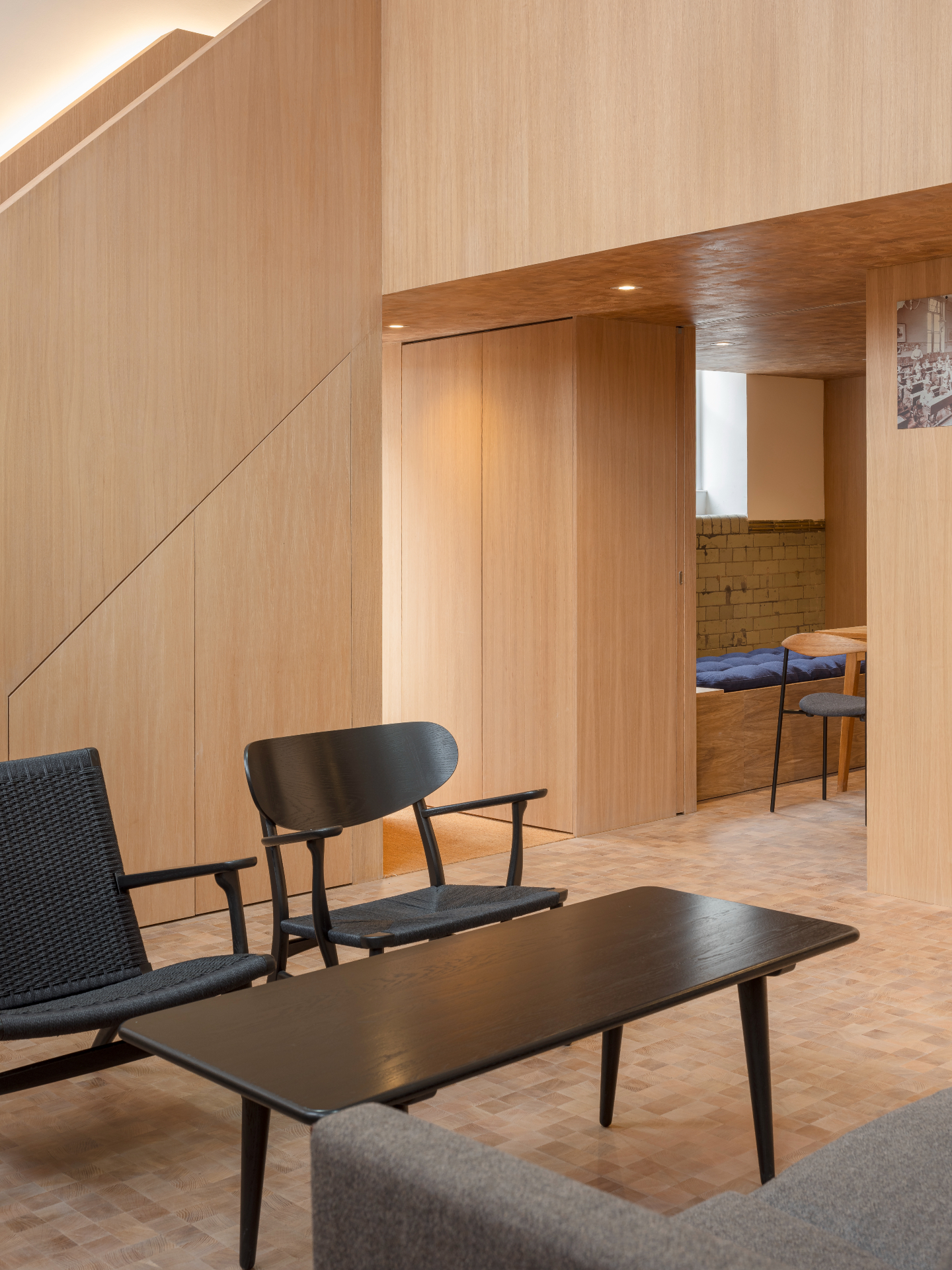
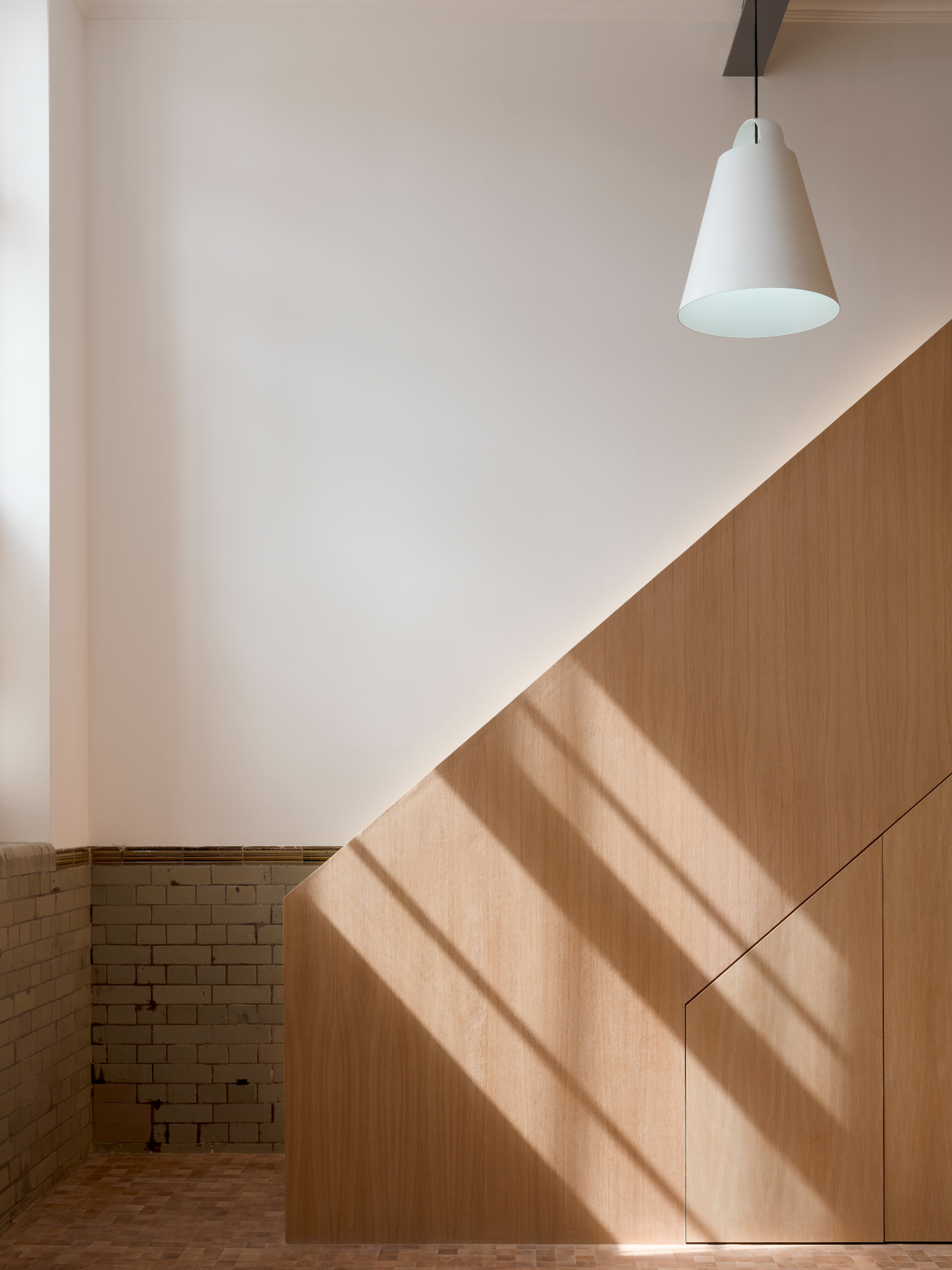
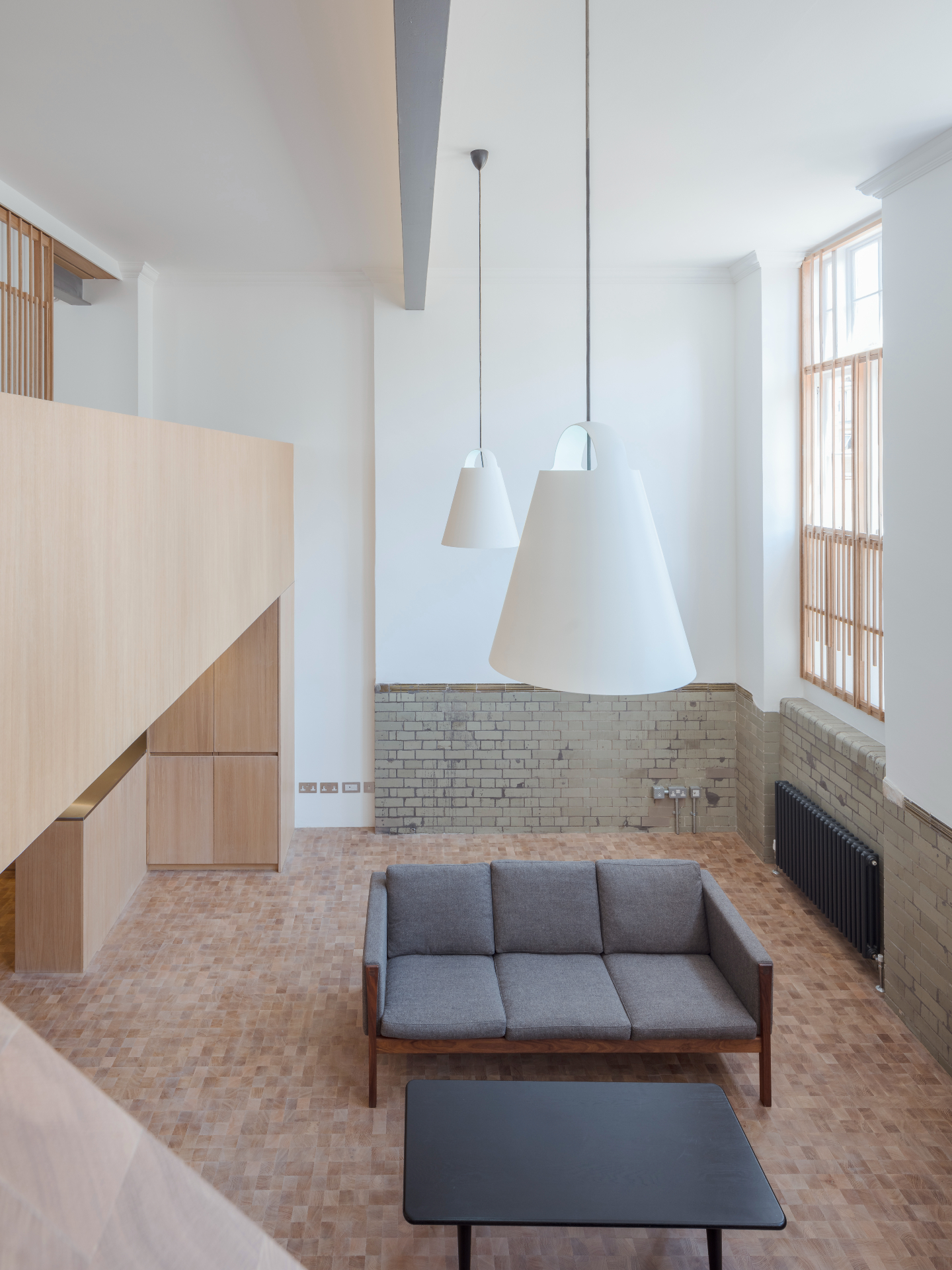
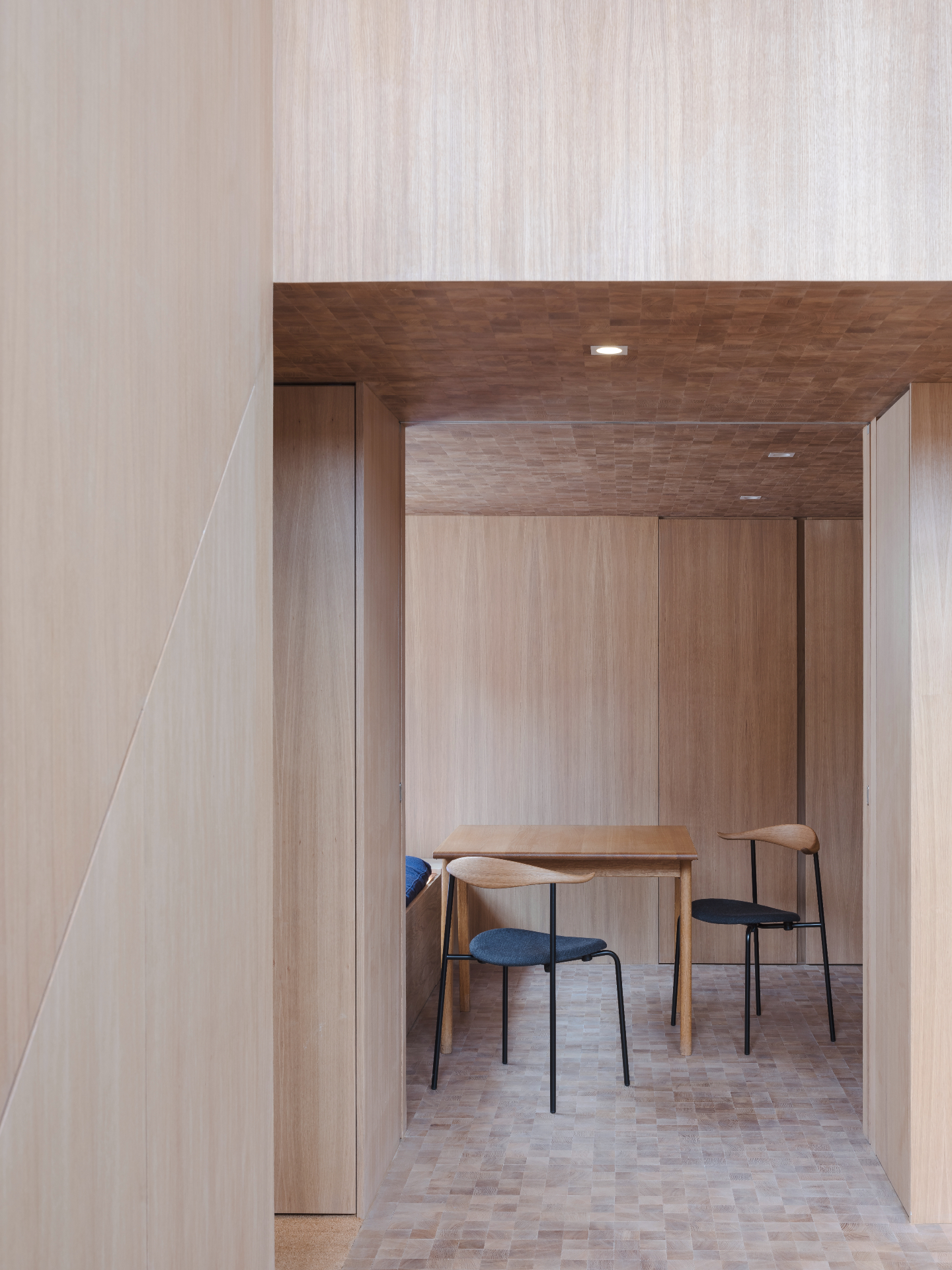
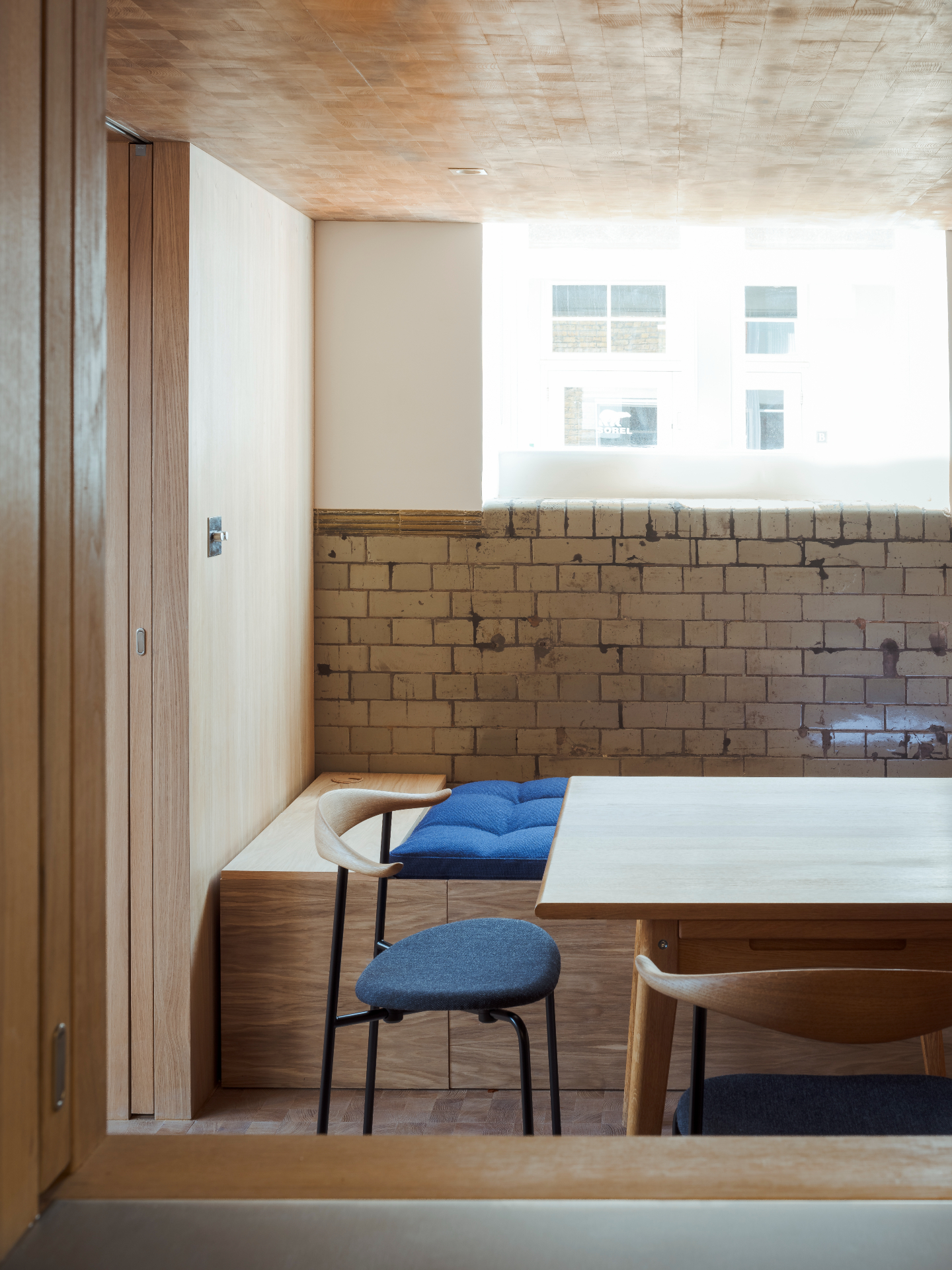
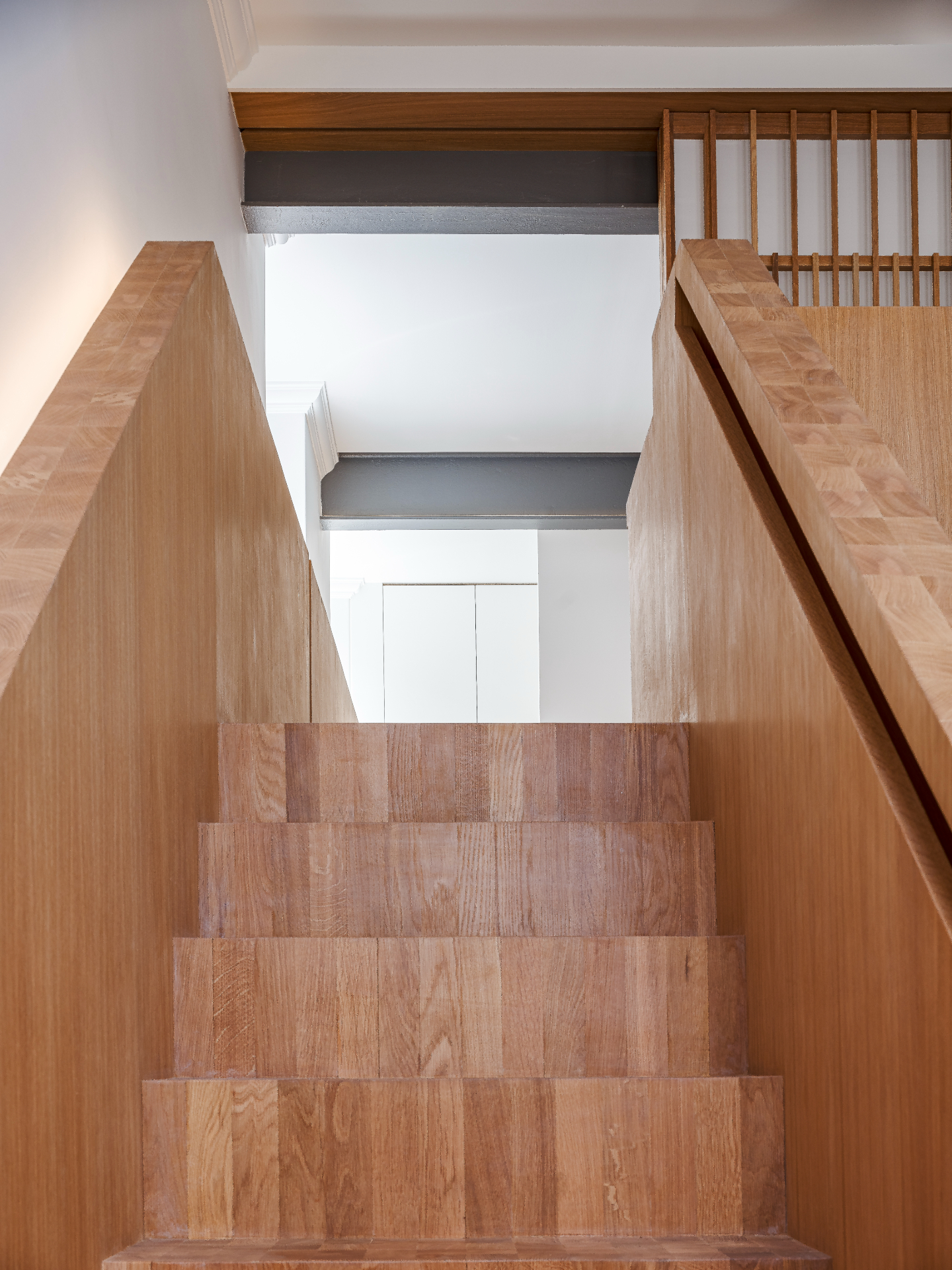
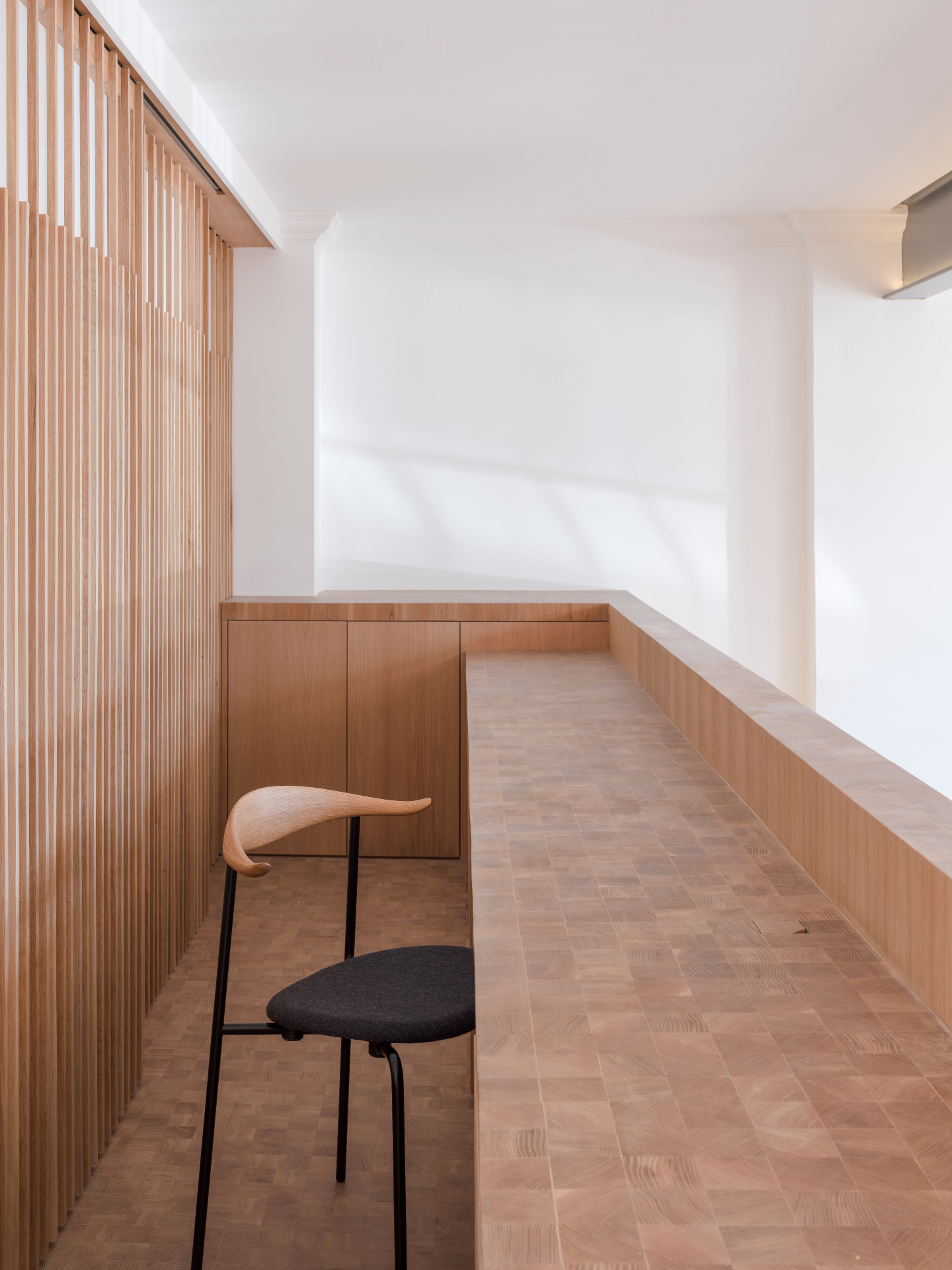
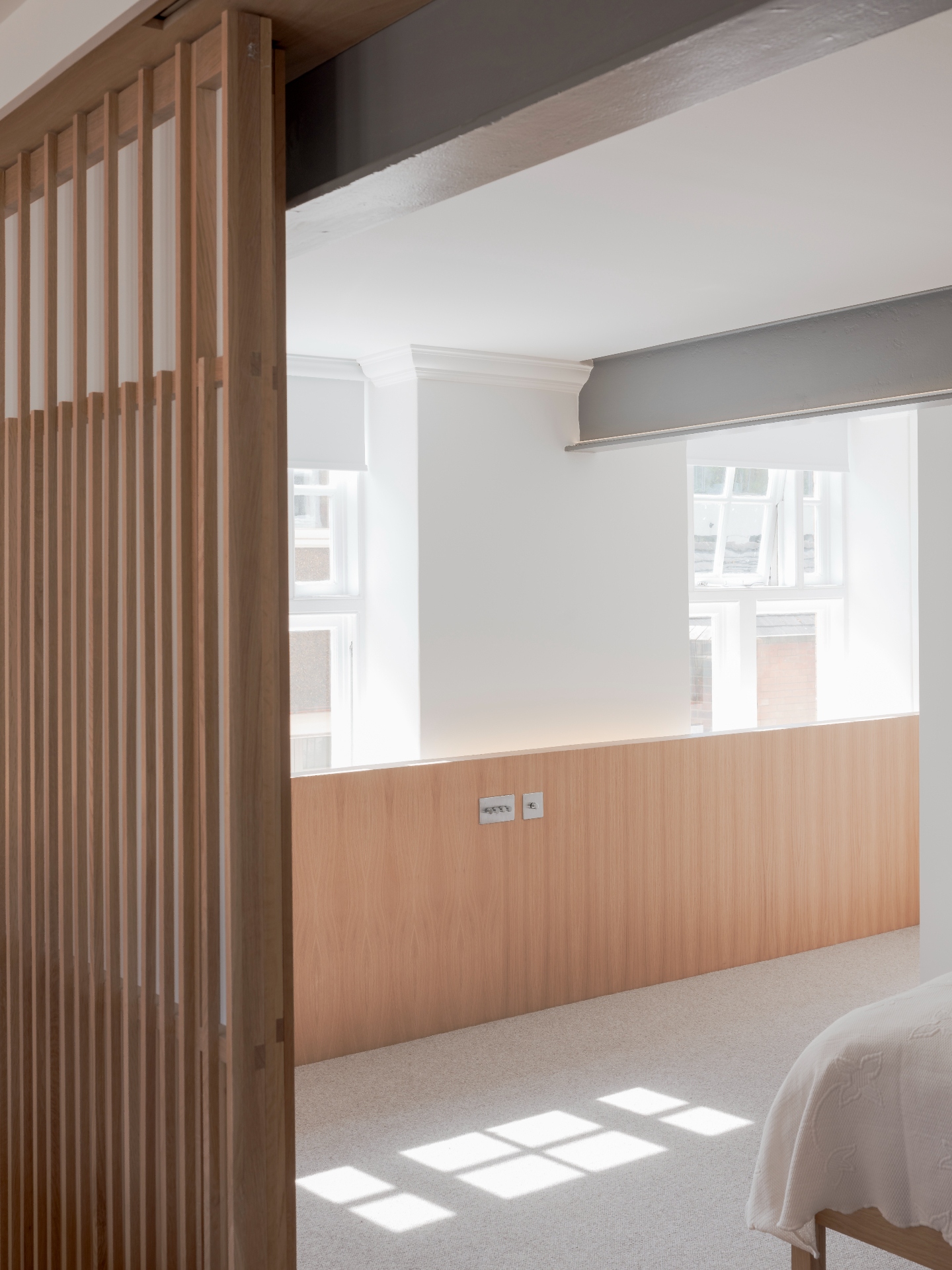
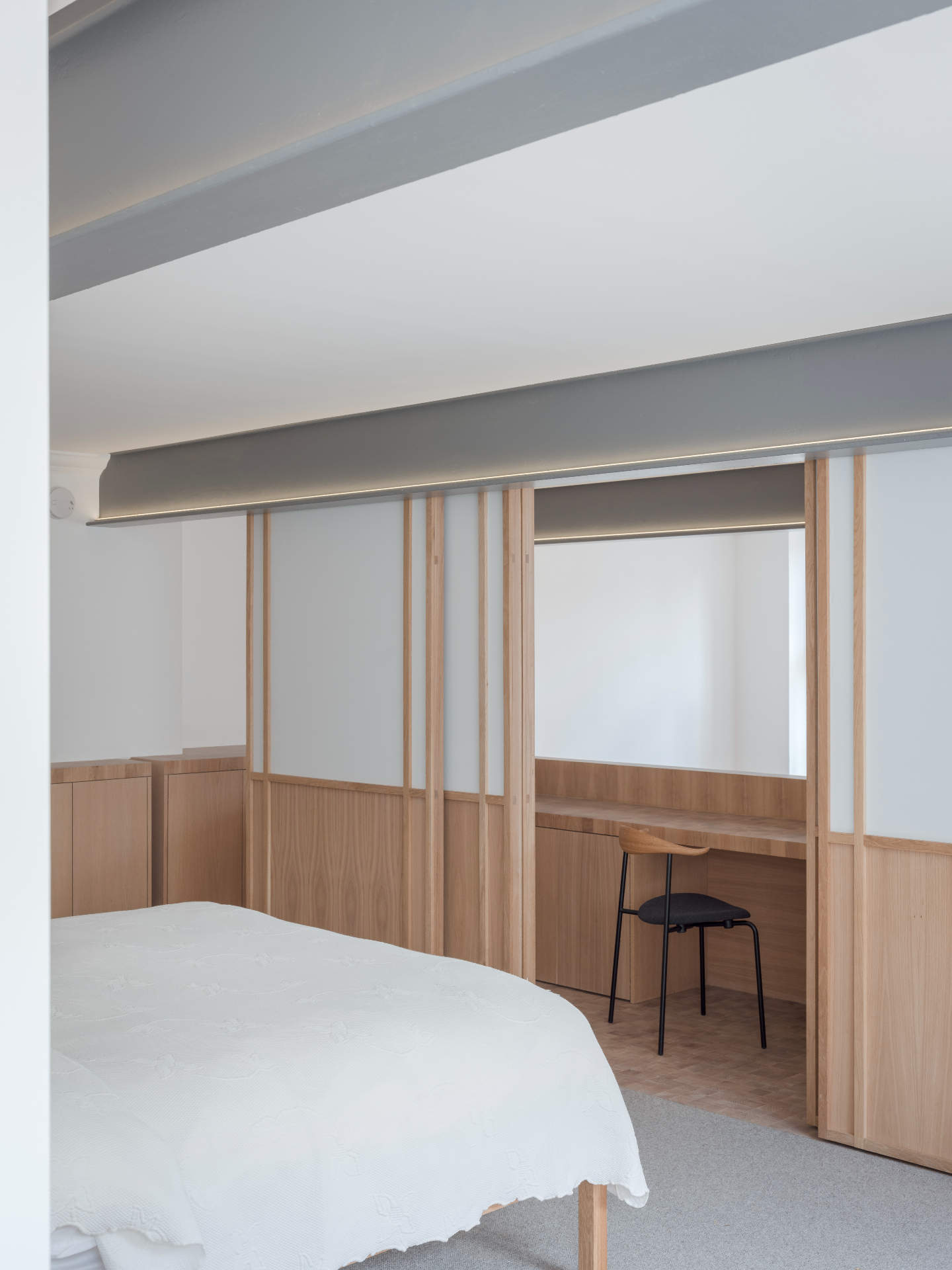
INFORMATION
Receive our daily digest of inspiration, escapism and design stories from around the world direct to your inbox.
Harriet Thorpe is a writer, journalist and editor covering architecture, design and culture, with particular interest in sustainability, 20th-century architecture and community. After studying History of Art at the School of Oriental and African Studies (SOAS) and Journalism at City University in London, she developed her interest in architecture working at Wallpaper* magazine and today contributes to Wallpaper*, The World of Interiors and Icon magazine, amongst other titles. She is author of The Sustainable City (2022, Hoxton Mini Press), a book about sustainable architecture in London, and the Modern Cambridge Map (2023, Blue Crow Media), a map of 20th-century architecture in Cambridge, the city where she grew up.
-
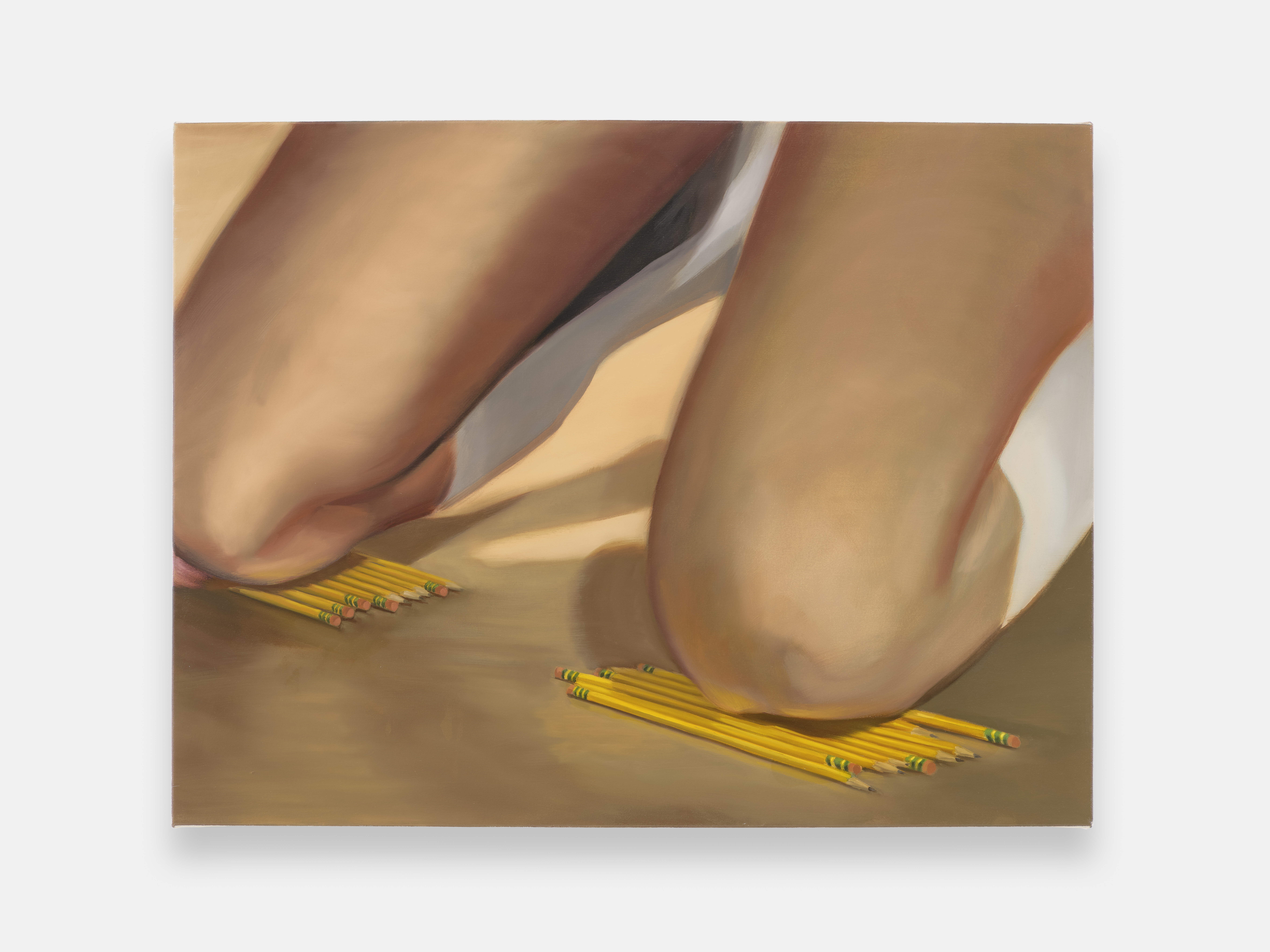 ‘I want to bring anxiety to the surface': Shannon Cartier Lucy on her unsettling works
‘I want to bring anxiety to the surface': Shannon Cartier Lucy on her unsettling worksIn an exhibition at Soft Opening, London, Shannon Cartier Lucy revisits childhood memories
-
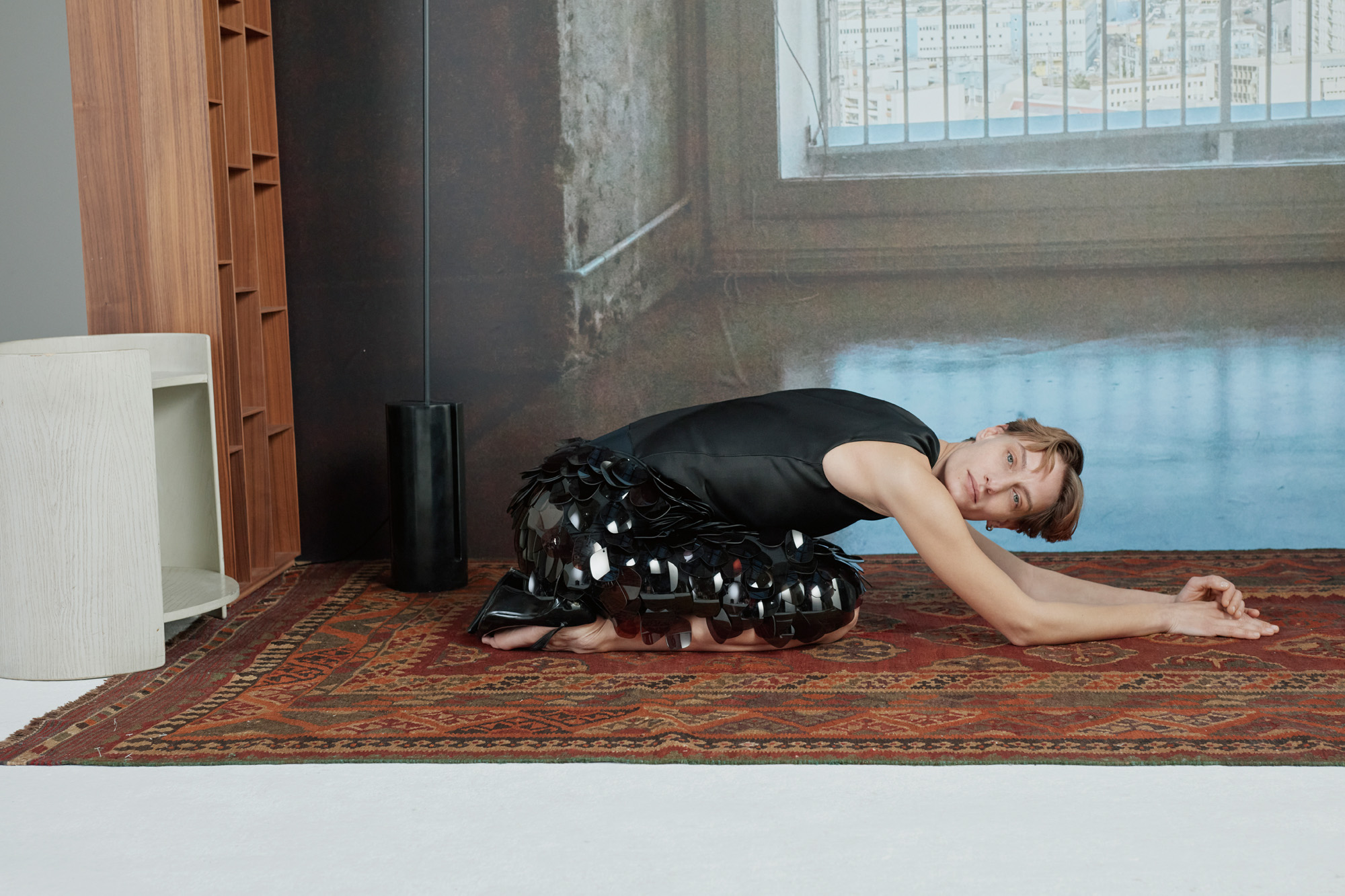 What one writer learnt in 2025 through exploring the ‘intimate, familiar’ wardrobes of ten friends
What one writer learnt in 2025 through exploring the ‘intimate, familiar’ wardrobes of ten friendsInspired by artist Sophie Calle, Colleen Kelsey’s ‘Wearing It Out’ sees the writer ask ten friends to tell the stories behind their most precious garments – from a wedding dress ordered on a whim to a pair of Prada Mary Janes
-
 Year in review: 2025’s top ten cars chosen by transport editor Jonathan Bell
Year in review: 2025’s top ten cars chosen by transport editor Jonathan BellWhat were our chosen conveyances in 2025? These ten cars impressed, either through their look and feel, style, sophistication or all-round practicality
-
 Arbour House is a north London home that lies low but punches high
Arbour House is a north London home that lies low but punches highArbour House by Andrei Saltykov is a low-lying Crouch End home with a striking roof structure that sets it apart
-
 A former agricultural building is transformed into a minimal rural home by Bindloss Dawes
A former agricultural building is transformed into a minimal rural home by Bindloss DawesZero-carbon design meets adaptive re-use in the Tractor Shed, a stripped-back house in a country village by Somerset architects Bindloss Dawes
-
 RIBA House of the Year 2025 is a ‘rare mixture of sensitivity and boldness’
RIBA House of the Year 2025 is a ‘rare mixture of sensitivity and boldness’Topping the list of seven shortlisted homes, Izat Arundell’s Hebridean self-build – named Caochan na Creige – is announced as the RIBA House of the Year 2025
-
 In addition to brutalist buildings, Alison Smithson designed some of the most creative Christmas cards we've seen
In addition to brutalist buildings, Alison Smithson designed some of the most creative Christmas cards we've seenThe architect’s collection of season’s greetings is on show at the Roca London Gallery, just in time for the holidays
-
 In South Wales, a remote coastal farmhouse flaunts its modern revamp, primed for hosting
In South Wales, a remote coastal farmhouse flaunts its modern revamp, primed for hostingA farmhouse perched on the Gower Peninsula, Delfyd Farm reveals its ground-floor refresh by architecture studio Rural Office, which created a cosy home with breathtaking views
-
 A revived public space in Aberdeen is named Scotland’s building of the year
A revived public space in Aberdeen is named Scotland’s building of the yearAberdeen's Union Terrace Gardens by Stallan-Brand Architecture + Design and LDA Design wins the 2025 Andrew Doolan Best Building in Scotland Award
-
 A refreshed 1950s apartment in East London allows for moments of discovery
A refreshed 1950s apartment in East London allows for moments of discoveryWith this 1950s apartment redesign, London-based architects Studio Naama wanted to create a residence which reflects the fun and individual nature of the clients
-
 In this Cotswolds home, drama meets minimalism
In this Cotswolds home, drama meets minimalismCotswolds home Hiaven house, with interiors designed by McLaren Excell, is a perfect blend of contemporary chic and calm, countryside drama